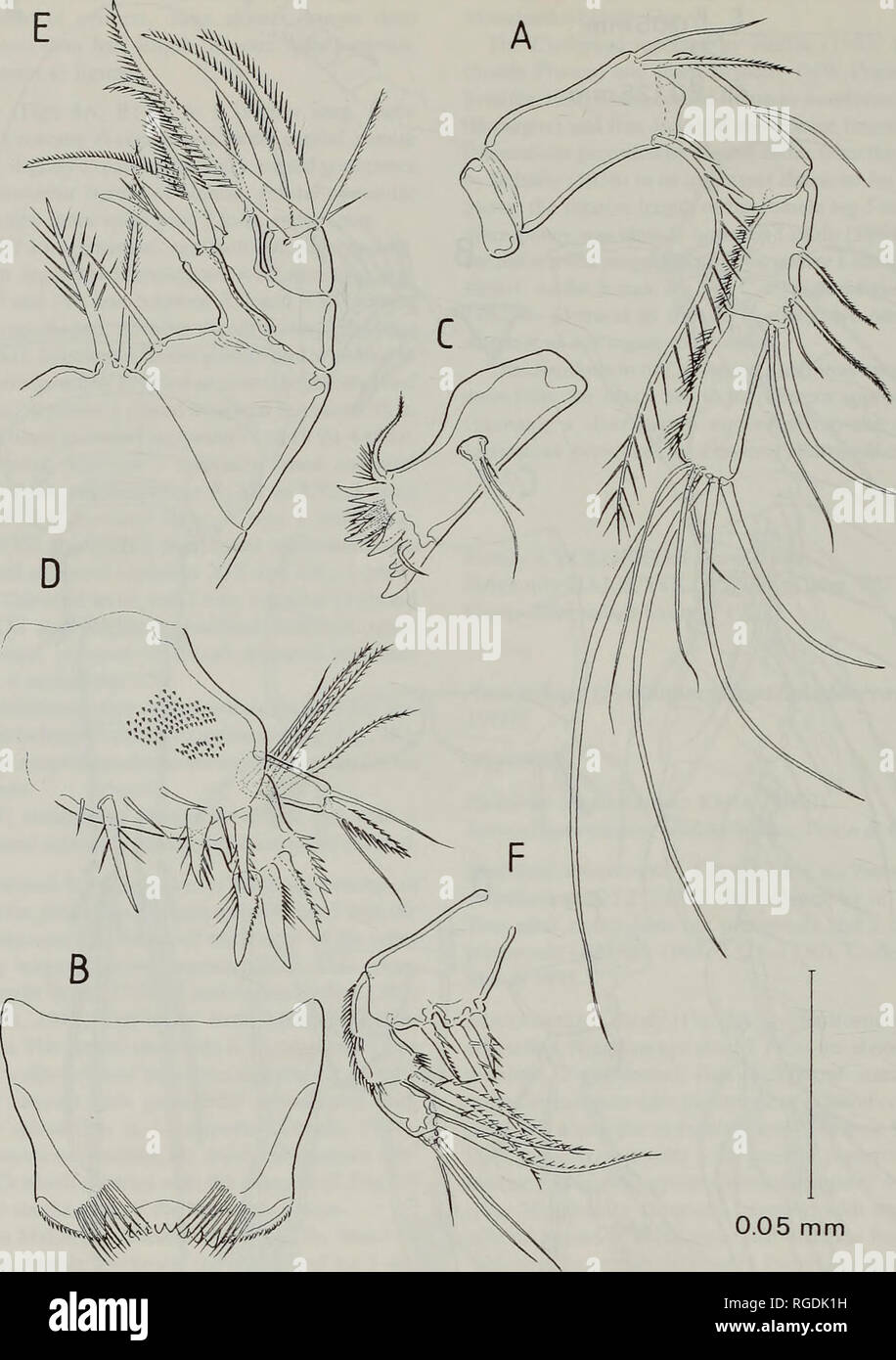. Bulletin of the Natural History Museum Zoology. 90 D. JAUME AND G.A. BOXSHALL. 0.05 mm Fig. 6. Neocyclops (Protoneocyclops) mediterraneus (Kiefer, 1960), adult male. A, antenna; B, labrum, ventral; C, mandible; D, maxillule; E. maxilla; maxilliped. XXVIII), 11+2 aesthetascs. Antenna (Fig. 6A) well developed, 5-segmented. Coxa and basis separate, coxa small, unarmed. Basis with 2 distal setae on inner margin and long distal seta, representing exopod, on outer margin. First endopod segment with seta inserted midway along inner mar- gin. Second endopod segment with 2 lateral and 3 distal setae

Image details
Contributor:
Book Worm / Alamy Stock PhotoImage ID:
RGDK1HFile size:
7.1 MB (268.5 KB Compressed download)Releases:
Model - no | Property - noDo I need a release?Dimensions:
1327 x 1882 px | 22.5 x 31.9 cm | 8.8 x 12.5 inches | 150dpiMore information:
This image is a public domain image, which means either that copyright has expired in the image or the copyright holder has waived their copyright. Alamy charges you a fee for access to the high resolution copy of the image.
This image could have imperfections as it’s either historical or reportage.
. Bulletin of the Natural History Museum Zoology. 90 D. JAUME AND G.A. BOXSHALL. 0.05 mm Fig. 6. Neocyclops (Protoneocyclops) mediterraneus (Kiefer, 1960), adult male. A, antenna; B, labrum, ventral; C, mandible; D, maxillule; E. maxilla; maxilliped. XXVIII), 11+2 aesthetascs. Antenna (Fig. 6A) well developed, 5-segmented. Coxa and basis separate, coxa small, unarmed. Basis with 2 distal setae on inner margin and long distal seta, representing exopod, on outer margin. First endopod segment with seta inserted midway along inner mar- gin. Second endopod segment with 2 lateral and 3 distal setae along inner margin; outer margin covered by patch of setules. Third endopod segment with 7 unequal setae on tip; outer margin adorned with 2 patches of setules, as figured. Labrum (Fig. 6B) with laterally serrate distal margin and row of 9 rounded teeth midway along margin; paired transverse rows of long spinules located subdistally on anterior surface of labrum. Mandible (Fig. 6C) with coxal gnathobase armed with 9 sharp, unequal teeth, 2 dorsal setae, and 1 naked setiform element located between third and fourth ventralmost teeth; inner dorsal seta with long spinules along one side; outer dorsal seta longer, with short spinules on both sides; transverse row of 7 long spinules disposed subdistally on cutting blade. Mandibular palp reduced to knob bearing 3 unequal setae. Maxillule (Fig. 6D) with well developed praecoxal arthrite; arma- ture consisting of 3 stout spines, 1 tiny spine and 3 slender setae proximally, and distal lobe armed with 4 thick, denticulate spines; 2. Please note that these images are extracted from scanned page images that may have been digitally enhanced for readability - coloration and appearance of these illustrations may not perfectly resemble the original work.. Natural History Museum (London). Andover : Intercept